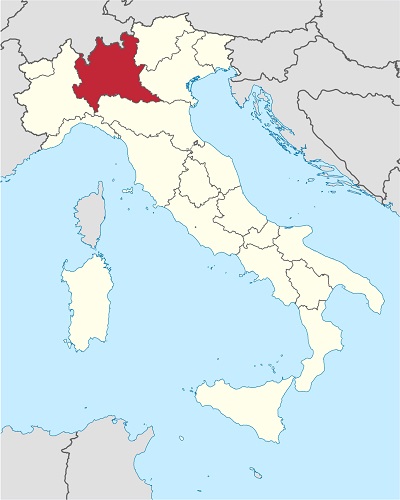White Wines Suggestions
White Oltrepò Pavese (Italy)
Pinot Bianco (Italy)
Pinot Grigio (Italy)
Soave (Italy)
Chardonnay (World)
Red Wines Alternatives
Red Oltrepò Pavese (Italy)
Nebbiolo from Valtellina (Italy)
Nebbiolo from Gattinara (Italy)
Valpolicella (Italy)
Barbera (Italy)
Bubbles
Sparkling Oltrepò Pavese (Italy)
Franciacorta (Italy)
Lambrusco (Italy)
Champagne (France)
Cava (Spain)
Sekt (Germany)
Prosecco (Italy)
Description
Risotto alla Milanese originated in Milano, Lombardia. The ingredients include Carnaroli rice, stock, saffron, butter, beef marrow and grated cheese.
Saffron is the world's most expensive spice, with prices similar to gold. The good news is that very small quantities are needed and that it pairs well both with white and red wines.
This creamy yellow risotto (risotto giallo) fills your mouth with fat. You need a wine to clean it.
The first choice is a local white or red. Lombardia has Nebbiolo in Valtellina, Bubbles in Franciacorta and excellent Whites and Reds in Oltrepo Pavese Wine Region.
Risotto alla Milanese is often served with Ossobuco, a braised Veal Shanks.
The main difference between Risotto alla Milanese and Risotto allo Zafferano is the Beef Marrow, present only in Risotto alla Milanese. The other ingredients are the same and many describe Risotto allo Zafferano as a basic recipe for the 2 styles risotto.
Black Grapes |
White Grapes |

17% Croatina |

13% Chardonnay |
Red Wines |
White Wines |

Bonarda |

|
Rosè Wines |
Sparkling Wines |

|

|
Soil |
Climate |

|

|
Lombardia DOCG Regions:
- Franciacorta DOCG
- Moscato di Scanzo DOCG
- Oltrepò Pavese Metodo Classico DOCG
- Sforzato di Valtellina DOCG
- Valtellina Superiore DOCG
Go Local if You Can

Let local wines complement the flavors of local food.
Pairing local wine with local food will enhance the dining experience by harmonizing the characteristics of the wine with the ingredients and cooking styles of the region:
Terroir
The environmental factors, soil, climate, and topography, that influence the characteristics of a wine, represent the Wine Terroir of a region. The ingredients, flavors, and cooking techniques represent the Cuisine Terroir.
Culture and Tradition
Local wines are deeply intertwined with the culture and traditions of a region. Pairing them with local cuisine creates an authentic culinary experience. For example, if a region is known for its hearty, red meat dishes, a robust and full-bodied red wine from the region will enhance the dining experience.
Ask for Help
Let local chefs and winemakers collaborate to create innovative pairings that showcase the best of the region.
A good rule of thumb is to match the intensity of the wine with the richness of the meat for the best pairing experience.
Examples
Pairing Italian Chianti with traditional Tuscan dishes like Pasta with Ragu or Beef Fiorentina.
Enjoy a Red Burgundy with classic French dishes like coq au vin or boeuf Bourguignon.
Matching Spanish Rioja with Paella or Tempranillo with Tapas.
Alcohol can be addictive. Always drink in moderation.
© Copyright 2015-2025 W3 Wine School. All Rights Reserved.


